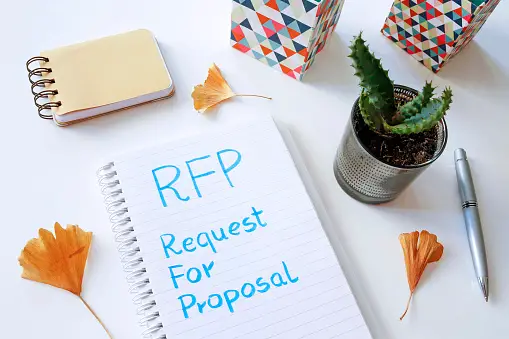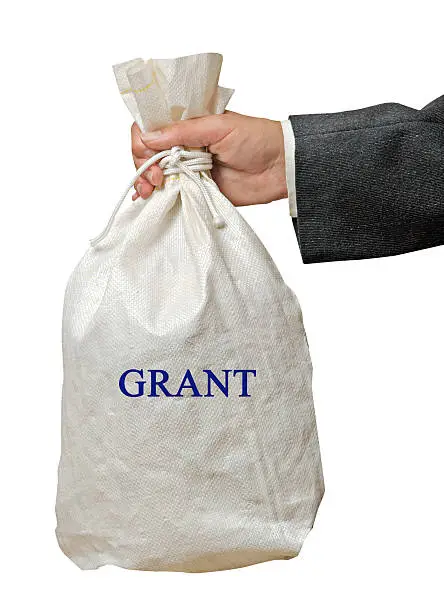Plant grants are a unique and exciting opportunity for individuals, communities, and organizations passionate about botany, gardening, agriculture, and environmental conservation.
These grants offer financial support for projects focused on plants, aiming to enhance biodiversity, educate communities, promote sustainability, and foster a deeper connection between people and the natural world. Here’s a closer look at what plant grants are, who can benefit from them, and the impact they have.
What Are Plant Grants?
Plant grants are funds allocated to support various initiatives related to plant cultivation, conservation, research, and education. These grants can come from a wide range of sources, including government agencies, private foundations, non-profit organizations, and corporate sponsors. The funding is intended to support projects that:
- Enhance Biodiversity: Projects that aim to protect native species, restore habitats, or introduce a variety of plants to an area.
- Educate and Engage Communities: Initiatives that involve community gardens, school gardening programs, or public workshops on gardening and conservation.
- Promote Sustainability: Efforts that focus on sustainable agriculture practices, urban farming, and innovative technologies for plant growth and health.
- Support Research and Innovation: Research projects investigating plant biology, genetics, disease control, and climate resilience.
The Importance of Plant Grants
1. Promoting Biodiversity and Environmental Health
At the heart of plant grants is the mission to enhance the planet’s biodiversity. By funding projects focused on the conservation of endangered plant species, the restoration of habitats, and the introduction of diverse plant life, these grants play a crucial role in maintaining ecological balance. The reintroduction of native species and the control of invasive ones, supported by these funds, help ensure healthy ecosystems that are resilient to climate change and provide essential services, such as pollination, water purification, and carbon sequestration.
2. Educating Communities and Cultivating Stewardship
Plant grants often target educational initiatives, aiming to instill a sense of environmental stewardship in communities. From school gardening projects that integrate hands-on learning about plant life cycles and sustainability, to community workshops on urban farming and conservation techniques, these grants empower individuals with the knowledge and skills to make environmentally conscious decisions. By fostering a connection between people and the natural world, plant grants help cultivate a generation of informed citizens ready to advocate for and implement green practices in their daily lives.
3. Supporting Sustainable Agriculture and Urban Greening
Sustainability in agriculture and urban development is another critical area where plant grants make a significant impact. Funding for innovative farming techniques that reduce water usage, enhance soil health, and minimize chemical inputs contributes to more sustainable food systems. Additionally, grants that support urban greening projects, such as rooftop gardens and community green spaces, not only improve air quality and reduce urban heat islands but also provide residents with access to fresh produce and a tranquil escape from the hustle and bustle of city life.
4. Advancing Scientific Research and Innovation
The pursuit of knowledge about plant biology, genetics, and ecology is vital for addressing global challenges such as food security, disease management, and climate change. Plant grants that fund scientific research enable discoveries that lead to more resilient crop varieties, effective pest control methods, and strategies for conserving plant diversity. These innovations not only have the potential to revolutionize agriculture and horticulture but also contribute to the broader scientific understanding of life on Earth.
5. Building Community and Fostering Connections
Lastly, plant grants play a pivotal role in building community. By bringing people together to work on gardening projects, conservation efforts, and educational programs, these grants create opportunities for networking, collaboration, and mutual support. They help forge strong bonds among individuals united by a common passion for the environment, promoting a sense of belonging and community engagement.
Comprehensive List of Foundations Awarding Plant Grants and their websites
1. The National Gardening Association (NGA)
- Focus: The NGA offers grants and resources for community gardening, school gardens, and other educational programs aimed at promoting gardening and sustainable agriculture practices.
- Website: garden.org
2. The American Horticultural Society (AHS)
- Focus: AHS provides various grants and scholarships for horticultural research, educational programs, and community projects, aiming to foster an appreciation for and sustainable use of plants.
- Website: ahsgardening.org
3. Botanic Gardens Conservation International (BGCI)
- Focus: BGCI offers support for botanic gardens worldwide, focusing on plant conservation, access to plant resources, and education to ensure the world’s plant species are protected.
- Website: bgci.org
4. The Pollinator Partnership
- Focus: Dedicated to the protection and promotion of pollinators and their ecosystems, the Pollinator Partnership awards grants for projects that support pollinator health, research, and conservation.
- Website: pollinator.org
5. The Arbor Day Foundation
- Focus: This foundation offers various grant programs to support tree planting and green space projects, emphasizing the critical role trees play in environmental sustainability and community well-being.
- Website: arborday.org
6. The Xerces Society
- Focus: Specializing in invertebrate conservation, the Xerces Society provides funding for habitat restoration projects that benefit pollinators and other invertebrates, crucial for plant health and biodiversity.
- Website: xerces.org
7. The Seed Fund from the Society for Ecological Restoration (SER)
- Focus: SER awards grants to projects that aim to restore ecological balance, including the reintroduction of native plant species and the rehabilitation of degraded ecosystems.
- Website: ser.org
8. The Sustainable Agriculture Research and Education (SARE)
- Focus: SARE offers grants to farmers, researchers, and educators to promote sustainable farming practices that improve production, reduce environmental impact, and enhance quality of life.
- Website: sare.org
9. The Nature Conservancy
- Focus: While primarily known for its conservation efforts, The Nature Conservancy occasionally provides funding for projects that align with its mission of protecting ecologically important lands and waters.
- Website: nature.org
10. The Garden Club of America
- Focus: Offering various scholarships and grants, the GCA supports botanical research, conservation, and education, aiming to stimulate the knowledge and love of gardening.
- Website: gcamerica.org
11. The Royal Horticultural Society (RHS)
- Focus: The RHS supports gardening and horticulture in the UK, offering grants for scientific research and projects that promote horticultural practices, garden history, and plant conservation.
- Website: rhs.org.uk
12. The Conservation, Food and Health Foundation
- Focus: This foundation supports projects that aim to conserve biodiversity, improve the production and distribution of food, and promote public health in the developing world.
- Website: cfhfoundation.grantsmanagement08.com
13. The Captain Planet Foundation
- Focus: Offering grants to schools and community organizations, the Captain Planet Foundation supports hands-on environmental education projects that encourage youth to work towards solving environmental problems in their communities.
- Website: captainplanetfoundation.org
14. The Global Environment Facility (GEF) Small Grants Programme
- Focus: Implemented by the United Nations Development Programme (UNDP), the GEF Small Grants Programme provides funding to NGOs and community-based organizations for projects that conserve and restore the environment while enhancing people’s well-being and livelihoods.
- Website: sgp.undp.org
15. The Grants for Plants program by the Plant a Seed & See What Grows Foundation
- Focus: This program supports educational initiatives that teach children about gardening, agriculture, and the environment, aiming to cultivate a sense of stewardship and connection to the Earth.
- Website: seeewhatgrows.org
16. The SeedMoney Challenge
- Focus: SeedMoney offers grants to community gardens, school gardens, food bank gardens, and others. Their crowdfunding challenge provides both funding and a platform to raise awareness for garden projects.
- Website: seedmoney.org
17. The Awesome Foundation – Food Chapter
- Focus: The Food chapter of the Awesome Foundation provides micro-grants to a wide array of projects including those related to plant-based initiatives, agriculture, and food sustainability.
- Website: awesomefoundation.org
18. The Stanley Smith Horticultural Trust
- Focus: This trust offers grants to organizations for projects that advance the knowledge and enjoyment of horticulture, focusing on plant research, garden creation, and the preservation of significant horticultural collections.
- Website: sshorticulturaltrust.org
19. The Fruit Tree Planting Foundation (FTPF)
- Focus: FTPF programs are designed to plant orchards where they will best serve communities for generations, at places such as public schools, city parks, low-income neighborhoods, Native American reservations, international hunger relief sites, and animal sanctuaries.
- Website: ftpf.org
20. Trees for the Future
- Focus: This organization is dedicated to improving the livelihoods of impoverished farmers by revitalizing degraded lands. They provide training and resources to plant trees that protect the environment and allow farmers to transition to more sustainable farming practices.
- Website: trees.org
How to Apply for Plant Grants
1. Identify Your Project Goals
Before diving into the application process, clearly define the objectives of your project. Whether it’s enhancing biodiversity, promoting sustainable agriculture, educating the community about plant conservation, or restoring a local habitat, having a clear set of goals will guide you in finding a grant that aligns with your project’s needs.
2. Research Potential Grants
Start by compiling a list of organizations and foundations that offer grants relevant to your project’s focus. Use the comprehensive list provided earlier as a starting point, but also consider local government agencies, universities, and businesses that might offer grants or sponsorships. Pay close attention to the grant’s focus, eligibility criteria, application deadlines, and funding scope to ensure a good fit for your project.
3. Understand the Requirements
Once you’ve identified potential grants, thoroughly read the application guidelines and requirements. Note any specific documentation needed, such as project proposals, budgets, timelines, and letters of support. Understanding these requirements upfront will save you time and increase your chances of submitting a successful application.
4. Craft a Compelling Proposal
Your proposal is the heart of your application. It should clearly articulate the purpose of your project, its goals, the methods you’ll use, the expected outcomes, and its broader impact on the community or environment. Be sure to:
- Demonstrate Need: Explain why your project is necessary and how it addresses a specific problem or opportunity.
- Outline Your Plan: Provide a detailed plan of action, including timelines, milestones, and who will be involved.
- Showcase Your Expertise: Highlight your or your team’s experience and qualifications to carry out the project.
- Budget Wisely: Present a clear and realistic budget that outlines how the grant funds will be used.
5. Seek Feedback
Before submitting your application, seek feedback from colleagues, mentors, or professionals in the field. Constructive feedback can help refine your proposal, making it more persuasive and effective. Additionally, proofreading for clarity, grammar, and adherence to guidelines is crucial.
6. Submit Your Application
Follow the submission guidelines precisely. Some grants may require online submissions, while others may ask for hard copies. Ensure that all parts of your application are complete and submitted by the deadline. Missing documents or late submissions can disqualify your application.
7. Prepare for Follow-up
After submitting your application, be prepared for any follow-up requests from the granting organization. They may ask for additional information, interviews, or site visits to better understand your project. Respond promptly and professionally to these requests.
8. If Successful, Manage Your Grant Responsibly
If your application is successful, congratulations! The next step is to manage the grant funds responsibly. Keep detailed records of all expenditures, adhere to the project timeline, and maintain open communication with the grantor. Regular updates and reports on your project’s progress can build trust and potentially lead to future funding.
9. If Not Successful, Seek Feedback and Try Again
Not every application will be successful, but each attempt is a learning opportunity. If possible, ask the grantor for feedback on your application and use this insight to improve future submissions. Persistence is key in the world of grant applications.
Tips on How to Write a Successful Plant Grants
1. Understand the Grantor’s Vision and Objectives
- Do Your Homework: Before you start writing, research the organization offering the grant. Understand their mission, goals, and what they hope to achieve through their grant program. Tailor your proposal to align with these objectives, showing how your project contributes to their vision.
2. Clearly Define Your Project Goals and Objectives
- Be Specific: Clearly outline what you intend to achieve with your project. Set specific, measurable, achievable, relevant, and time-bound (SMART) objectives. This clarity helps the grantor understand the potential impact of your project and how it aligns with their goals.
3. Demonstrate the Need for Your Project
- Address the Problem: Clearly articulate the problem or need your project addresses. Use data, research, and case studies to underscore the importance of your project. Showing a deep understanding of the issue at hand will strengthen your proposal.
4. Detail Your Methodology
- Plan of Action: Describe how you intend to achieve your project goals. Include your strategies, activities, and the timeline for your project. This section should convince the grantor that you have a well-thought-out plan for making your project a success.
5. Highlight Your Team’s Expertise
- Build Credibility: Showcase the qualifications, experience, and skills of your team members. Highlighting the strengths of your team reassures the grantor that your project is in capable hands.
6. Present a Detailed Budget
- Be Transparent and Realistic: Provide a clear, detailed budget that outlines how you will use the grant funds. Include all expenses related to the project, such as materials, labor, and any overhead costs. Justify each expense to show you’ve carefully considered the financial aspects of your project.
7. Demonstrate Sustainability
- Long-Term Impact: Grantors often look for projects that have a lasting impact. Discuss how your project will be sustained beyond the grant period, whether through community support, ongoing funding strategies, or partnerships.
8. Include Supporting Materials
- Strengthen Your Proposal: Letters of support from community leaders, organizations, or experts in the field can bolster your proposal. Including photos, maps, or preliminary data can also help visualize your project and its impact.
9. Proofread and Follow Submission Guidelines
- Attention to Detail: Ensure your proposal is free from errors and clearly written. Follow the grantor’s submission guidelines to the letter, including formatting instructions, page limits, and submission deadlines. Attention to these details reflects your professionalism and commitment to the project.
10. Be Passionate and Persuasive
- Engage Your Reader: Your passion for the project should come through in your writing. Use persuasive language to convey the significance of your project and its potential to make a difference. A compelling narrative can captivate your audience and make your proposal stand out.




